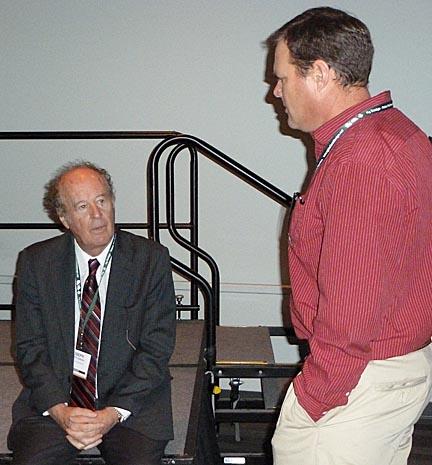 For superintendents managing cool-season grass, seeking advice from university researchers on the best ways to treat for or prevent anthracnose often has been like a trip to the doctor: "Take a dose of a fungicide, put it into a rotational program and call me in the morning."
For superintendents managing cool-season grass, seeking advice from university researchers on the best ways to treat for or prevent anthracnose often has been like a trip to the doctor: "Take a dose of a fungicide, put it into a rotational program and call me in the morning."
Not one to shy away from challenging the status quo, Michigan State University turfgrass pathologist Joe Vargas, Ph.D., says that implementing a rotational program for diseases such as anthracnose are exactly what you shouldnt do.
"I hope before I die, because it won't happen before I retire, that I never hear another person stand up and say don't forget to practice resistance management by rotating chemistries," Vargas said during the Ohio Turfgrass Foundation Conference and Show earlier this month in Columbus.
According to Vargas, a fungus eventually will become resistant to whatever is being applied to it for control. If that treatment is a rotation of multiple chemistries, once the fungus becomes resistant to one product it becomes resistant to everything else in that program even if those fungicides represent separate classes of chemistry. Contrary to some information available in the field today, Vargas said turfgrass managers will get control for an extended period of time if they use just one fungicide at a time.
"If you rotate chemistries, the fungus will become resistant to everything you put in that rotation. It's called population pressure. What survives depends on the pressure put on the population," Vargas said.
"You're far better off using one until it doesn't work any more and then switching to the next until it doesn't work any more and then the next one. You will increase the life expectancy of all of those chemicals."
He is referring mostly to chemistries such as QOI-inhibitors, thiophanate-methyl and DMI fungicides. Diseases like anthracnose already have developed varying levels of resistance to those chemistries depending on location.
"If it was me, and it wasn't too late," he said of the chemistries thiophanate-methyl and azoxystrobin, "I would choose a fungicide and use it, use it and use it until it doesn't work any more. Then I would go to the other one until it doesn't work any more. If you put them into a rotation, the fungus quickly will be resistant to both, because the survival of the population depends on the pressure you put on that population."
Although Vargas discussed chemical alternatives for preventive and curative control of troublesome summer diseases such as anthracnose, brown patch and take-all patch, he also offered options that relied on cultural practices alone or in concert with a fertility program.
Those diseases, said Vargas, often lie in virtual dormancy waiting for the opportune moment to pop. Often, the trigger is saturated turf when soil temperatures are high in July and August.
Periods of deep, infrequent irrigation coupled with regular fertility can help prevent summer patch on annual bluegrass, take-all patch in bentgrass and anthracnose, which affects annual bluegrass in northern climates and bentgrass in the South.
"You can't do much about the rain, but (when its not raining) you can avoid saturated soil with deep, infrequent irrigation program," he said. "You'll have a lot less summer patch and take-all patch."
Summer diseases in cool-season turf often go misdiagnosed and improperly treated by turfgrass managers, Vargas said. He urges superintendents, when submitting soil samples for analysis, to include a digital image of the damage at the surface. Often times, he said, a turfgrass manager will treat for what he believes is one of summers major turf disease threats while awaiting results of a soil test only to have the problem officially diagnosed as something else, such as nematode damage or the result of poor drainage.
"Take a picture of the damage with a digital camera and submit that with the sample so we know what it looks like," he said.
Several research projects, Vargas said, show that a regular nutrition program that includes monthly feedings, regular topdressing (to the point where the crown is covered in sand) and frugal water use can effectively curb anthracnose and other summer diseases. Foliar fertilizers used in combination with chlorothalonil also have been effective, he said.
Vargas cited research by Bruce Clarke, Ph.D., of Rutgers University that showed that use of plant growth regulators also can help reduce the potential for anthracnose.
Summer patch is an effective biological control for annual bluegrass, but is not one Vargas recommends for those for whom job security is important.
"If you can get enough of these patches on your greens," he said, "the superintendent who replaces you will have nice, creeping bentgrass greens."

